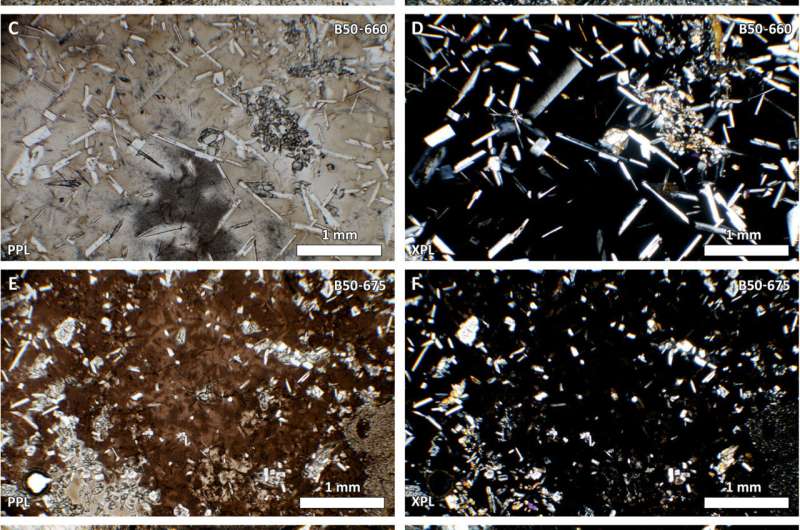June 21, 2021 report
Precise dating technique shows Boltysh impact not involved in dinosaur extinction

A team of researchers affiliated with several institutions in the U.K. has used an advanced dating technique to find out how long ago the Boltysh crater in Ukraine was formed. In their paper published in the journal Science Advances, the group describes how they dated the crater, what they found and what their findings suggest about the events that led to the dinosaurs going extinct.
The Boltysh crater was discovered in 2002 and was initially believed to have been formed by an asteroid strike approximately 2,000 to 5,000 years before the Chicxulub impact event, which occurred approximately 65 million years ago. Because of their close proximity in time, some had suggested that the dinosaur extinction might have been due to a one-two punch of two massive asteroids colliding with the earth. In this new effort, the researchers have used a more precise dating technique to learn more about the date when the Boltysh crater was formed.
The dating effort involved collecting sediment from the impact site that had landed there after the asteroid hit. Prior research had shown that such sediment is made of melted rock debris from the impact that had been covered over with soil over the years. To reach the sediment they were after, the researchers had to drill down to it. They then used their dating technique—called argon-argon geochronology—to measure isotopes of argon in the sediment. It showed the crater to be approximately 65.39 million years old. The team also analyzed grains of sanidine from a coal layer in Montana to measure the time difference between the two impacts. They note that the new technology they used to measure their samples were four times more precise than instruments used over the past few decades.
The work by showed that the Boltysh impact was not part of a one-two punch pushing the dinosaurs to extinction—it came almost 1 million years later—far too late to kill the dinosaurs; they were all gone by the time it occurred. But it would have been a tremendous impact—one so great that it likely destabilized the global climate and possibly disrupted recovery from the Chicxulub impact event.
More information: Annemarie E. Pickersgill et al, The Boltysh impact structure: An early Danian impact event during recovery from the K-Pg mass extinction, Science Advances (2021). DOI: 10.1126/sciadv.abe6530
Journal information: Science Advances
© 2021 Science X Network





















